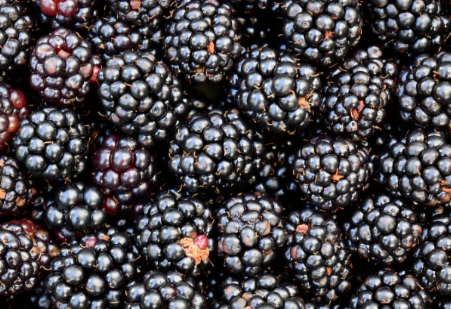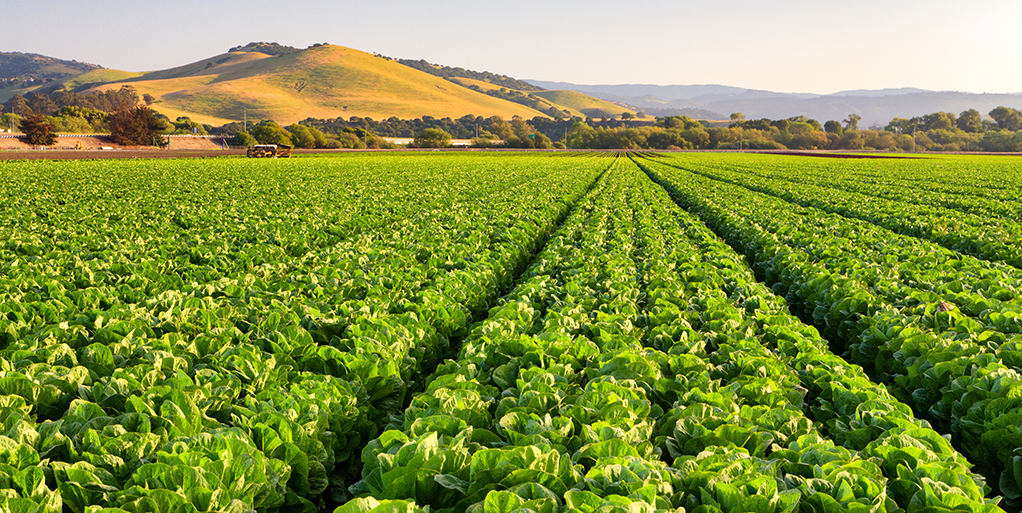Recall is a scary word for both farmers and consumers. Fears of getting sick can keep consumers from buying certain products after recall news goes public. Farmers and distributors have to worry about product and profit losses which could greatly impact their businesses. Recent, widespread, and frequent, recall news is pushing issues of food safety and traceability to the forefront.
The romaine recall out of Salinas Valley California has been getting a lot of media coverage recently. So far, over 100 people are confirmed to have been infected with the virus strain, Escherichia coli O157:H7. Over half of those affected have been hospitalized and approximately 10 people have developed Hemolytic Uremic Syndrome (HUS), which is a type of kidney failure caused by E. coli.
The FDA and the CDC continue to advise that consumers avoid any romaine grown in Salinas and to not eat romaine of unknown origins. Growers in Salinas have been cooperating with officials to try and find the source of the contamination, but so far no specific source has been discovered. Samples from soil, compost, water and other possible sources of contamination have been tested by officials. Romaine samples from stores in the area and far beyond are still being taken and analyzed in an attempt to trace back the distribution lines for more possible contamination.

Although all production from Salinas has been stopped for the rest of the season and any remaining lettuce has been plowed back to the fields, the same strain of E. coli keeps popping up. Officials in Wisconsin reported finding the bacteria in a bag of pre-cut and washed romaine dated mid November. Wisconsin has been the state hit hardest with 33 confirmed cases of the O157:H7 bacteria. Despite a voluntary recall that has been in effect since mid November, products with romaine from Salinas remain on store shelves. The FDA has reported that the investigation into the source of contamination has them reviewing hundreds of distribution records and will be ongoing.

Romaine is certainly not the only product affected by recalls this year. Recently, blackberries have been recalled in 11 states for possible hepatitis A exposure. There are 18 confirmed patients, with more expected to be identified as symptoms of hepatitis A can take up to 50 days to develop post exposure. Cut fruit from a distributor in New Jersey has been recalled from hospitals and schools this month for salmonella contamination, and earlier this fall, over 2000 cases of apples were recalled from a packhouse for possible listeria contamination.
In the US, over the past decade, the number of recalls issued yearly has nearly doubled; averaging at about 675 a year. This statistic alone leads consumers to believe our food system is becoming more and more unsafe, however this can be deceiving. Although the total number of recalls has increased, the number of illnesses related to food contamination has actually remained the same. Additionally, around half of all food recalls are related to possible undeclared allergens, like nuts or dairy, and not due to illness causing viruses or bacteria. In 2011, the FDA was granted more investigative power and ability to issue recalls and demand production stops. Growers and distributors rarely wait for the FDA to issue mandatory recalls however, and often opt to issue voluntary recalls in an effort to avoid bigger recalls down the road. New technologies also mean that investigators and doctors are better equipped to identify food related illnesses when they occur, so issues that had previously flown under the radar are being identified, leading to more recalls. In short, the increase in the number of recalls actually indicates that we are getting better at finding and tracking food safety concerns.
Regardless of these improvements or the reason, a recall is still often a logistical nightmare to carry out. The length and scope of the romaine recall illustrate just how difficult is it to trace contaminants to their source, and to find and identify contaminated produce once it leaves the farm or pack house. Global food trade means that contaminants, pests and diseases can travel thousands of miles away from their point of origin before they are ever discovered. Because of this, calls for better traceability in our food system are coming from consumers, producers and food safety officials alike.
Improved labelling systems are one way to help address traceability issues. Being able to identify romaine grown in Salinas using growing region labels has saved many consumers from becoming ill. With mandated growing region labelling requirements, the needless waste of romaine of unspecified origin being thrown away could have been avoided. More stringent, and product specific labelling requirements are being rolled out in Canada in the next few years that will require producer specific codes as opposed to generic codes on UPC labels.
So what can growers do to decrease the risks associated with recalls? Produce recalls will never be eliminated entirely, but growers can take steps to improve their traceability and to narrow the focus of recalls. Better documentation, harvest traceability, and detailed labelling at harvest time can allow growers to trace back through their inventory and more easily identify the source of contamination, be it a single farm or packhouse, or even a single field.
Global Good Agricultural Practice (GAP) guidelines state that growers must have a recall plan in place that is tested annually in a mock recall scenario. Canada GAP requirements demand the strictest identification of products possible stating that, “for complete traceability, a Lot ID is to be assigned to all market product.” Furthermore, for global GAP certification, farms are required to maintain a documented identification and traceability system that can be traced back to the registered farm, and forward to the immediate customer, and to develop a crisis management plan in the event of a recall. Croptracker’s mock recall report allows growers to see the entire lifecycle of a product, and each stop it makes along the way to shipping. Croptracker users can generate this data in an easy to follow chart that is responsive, easy to read, and that allows you to see more information at every step of a product’s lifecycle.
Interested in learning more about Croptracker? Learn more about our Farm Management Software, or book a demonstration to schedule a meeting with our product experts. Or if you liked this article, subscribe to our monthly newsletter!
And as always, if you're ever stuck, never hesitate to e-mail us at support@croptracker.com or Live Chat with us by clicking the green speech bubble ![]() in your bottom right-hand corner. We're always happy to help, so Croptracker can make your farm more efficient, safer, and more profitable!
in your bottom right-hand corner. We're always happy to help, so Croptracker can make your farm more efficient, safer, and more profitable!


